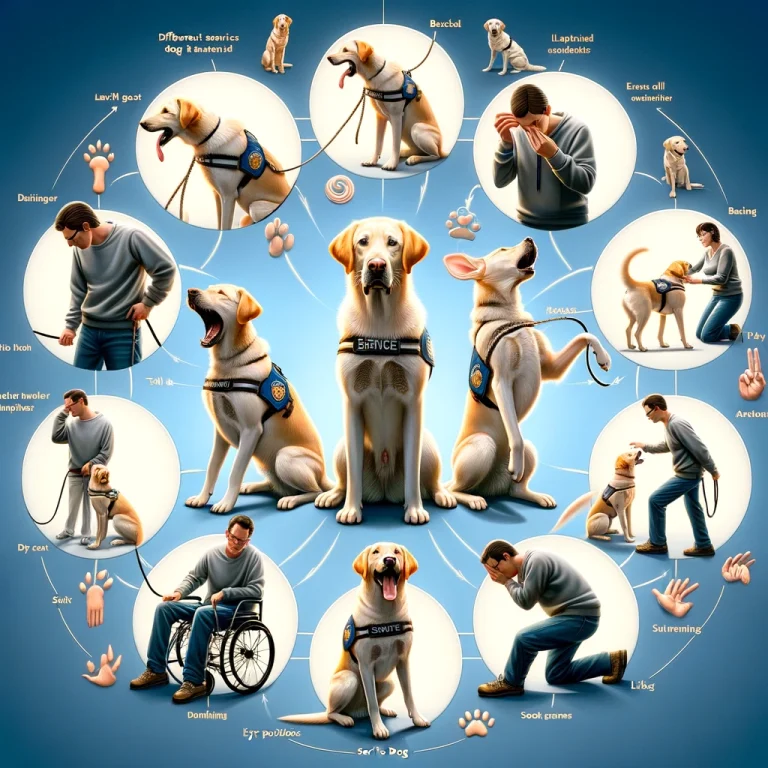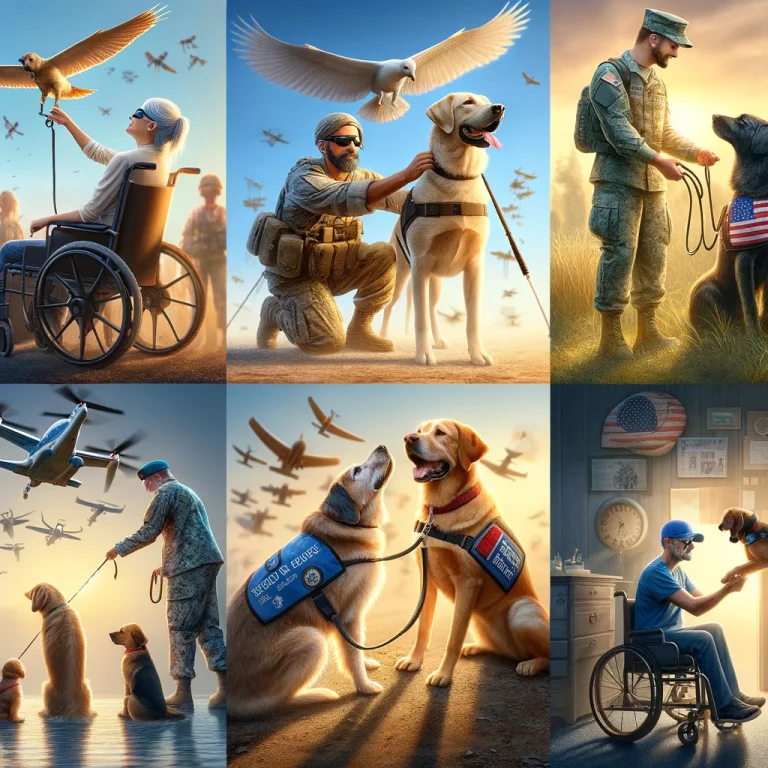Introduction: The Transformative Power of Service Dog Training
Service dog training is a journey that transforms not just the dogs but also the lives of individuals with disabilities. At ServicePupSolutions.com, we embark on a detailed exploration of this vital process, underscoring how these canines become indispensable aids to their handlers.
Understanding Service Dog Training
Service dog training is a specialized discipline, aiming to equip dogs with skills to assist people living with disabilities. This process involves a series of steps, each building upon the last, to ensure that the dog can adequately meet the specific needs of their handler.
The First Step: Basic Obedience Training
The foundation of a service dog’s education lies in basic obedience training. Here, dogs learn essential commands such as sit, stay, come, and heel. Trainers use positive reinforcement techniques to encourage good behavior, setting the stage for more complex training.
Progressing to Advanced Skills
After mastering basic obedience, service dogs undergo advanced training. This phase involves teaching tasks tailored to their future role, such as guiding the visually impaired, aiding the hearing impaired, or providing mobility support. This level of training demands patience, repetition, and an understanding of the dog’s capabilities and limitations.
Customizing Training to Fit Specific Needs
Training a service dog is not a one-size-fits-all process. Depending on the handler’s needs, dogs are trained in specific skills. For example, some dogs are trained to detect and alert their handlers to medical issues like seizures, while others might specialize in providing psychological support for mental health conditions.
The Role of Professional Training and Self-Training
While many handlers choose professional training for their service dogs, an alternative is self-training. This approach allows for a customized training process, though it can be challenging. For those pursuing self-training, online resources like ServiceDogOwners.com offer invaluable guidance and support.
The Handler’s Role: A Crucial Component
In both professional and self-training scenarios, the handler’s involvement is fundamental. The handler’s active participation ensures that the dog is responsive to their specific cues and helps in fostering a bond that is crucial for an effective working relationship.
Behavioral Management: A Key Training Aspect
Effective service dog training also involves behavioral management. A service dog must be well-behaved and adaptable in various public and private environments. Consistent training and exposure to different situations are essential in preparing a service dog to behave appropriately in any setting.
Legalities and Certification: Understanding the ADA
When it comes to the legal aspects of service dog training, understanding the Americans with Disabilities Act (ADA) is crucial. The ADA stipulates the rights of individuals with service dogs to access public spaces but does not require formal certification. While certification can be beneficial for ease of access and public understanding, it’s not a legal requirement. The real measure of a service dog’s effectiveness lies in their ability to perform tasks that alleviate aspects of the handler’s disability.
Continuous Training: Ensuring Skill Proficiency
Service dog training is an ongoing commitment. Regular training sessions are crucial to maintaining the dog’s skills and ensuring they remain responsive to their handler’s current needs. This continual learning process is essential for the dog to provide effective assistance throughout its working life.
More Than Assistance: Emotional and Psychological Support
The role of service dogs extends beyond physical assistance. These animals offer invaluable emotional and psychological support, helping to alleviate stress, anxiety, and loneliness. The presence of a service dog can significantly enhance the mental well-being of individuals with disabilities.
Special Considerations for Child Handlers
Training service dogs for children and adolescents requires additional considerations. For young handlers, service dogs not only provide physical assistance but also aid in developing social skills, confidence, and a sense of responsibility.
Addressing Training Challenges
Training a service dog is not without its challenges. Issues such as distraction, fear, or anxiety in the dog can arise. Addressing these challenges effectively is crucial to the success of the training process. This may involve adapting training methods, seeking professional advice, or simply being patient and consistent in reinforcing desired behaviors.
Conclusion: A Lifelong Journey of Partnership
In conclusion, the training of a service dog is a multifaceted and lifelong journey that fosters a deep partnership between the dog and handler. This process is pivotal in empowering individuals with disabilities, providing them not only with physical support but also with companionship and emotional stability. For an extensive range of resources, insights, and support on service dog training, visit ServicePupSolutions.com, where we’re committed to assisting you every step of the way in this rewarding journey.
Need help self-training a Service Dog? Click Here for assistance.






